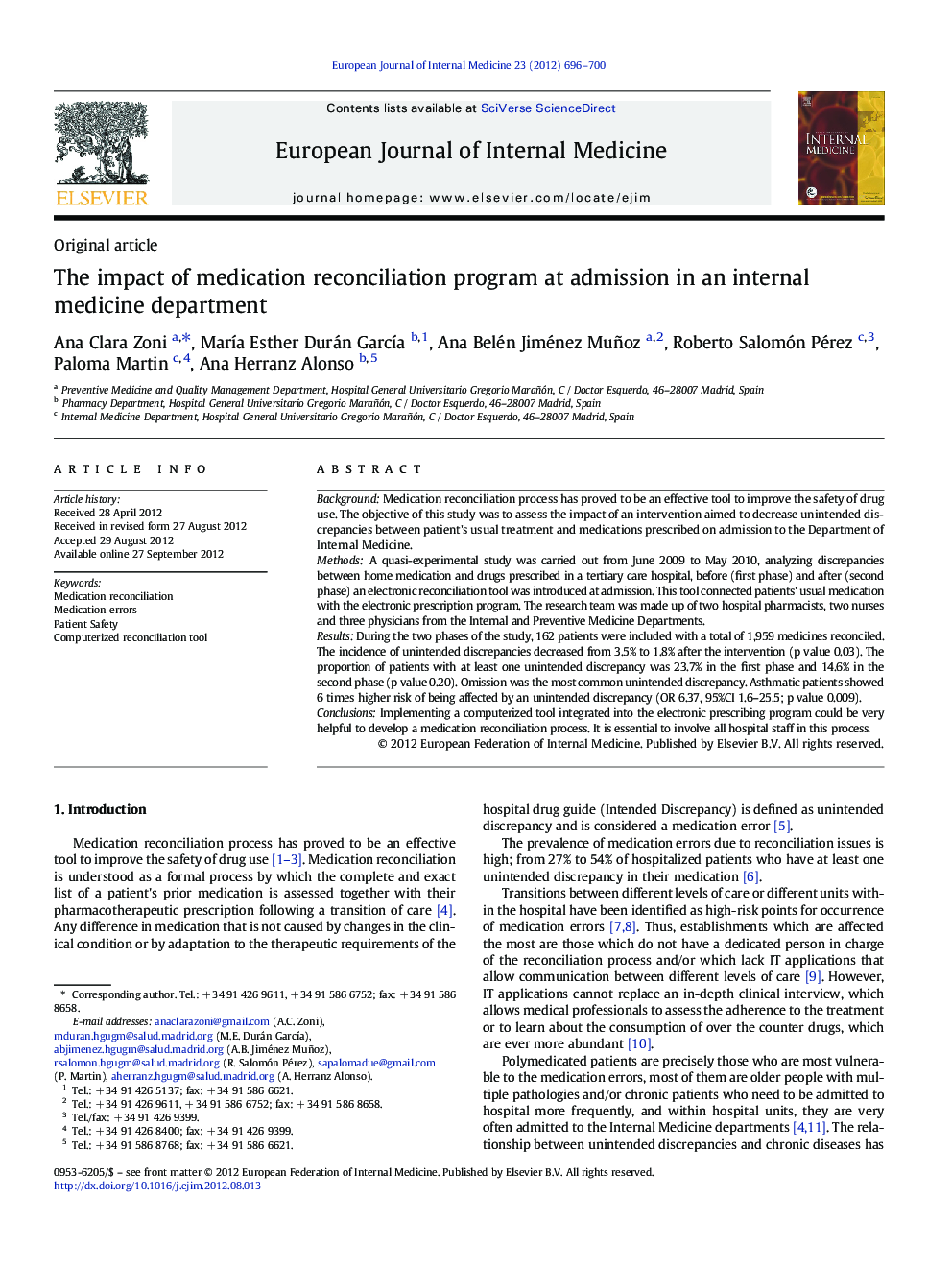| Article ID | Journal | Published Year | Pages | File Type |
|---|---|---|---|---|
| 3467349 | European Journal of Internal Medicine | 2012 | 5 Pages |
BackgroundMedication reconciliation process has proved to be an effective tool to improve the safety of drug use. The objective of this study was to assess the impact of an intervention aimed to decrease unintended discrepancies between patient's usual treatment and medications prescribed on admission to the Department of Internal Medicine.MethodsA quasi-experimental study was carried out from June 2009 to May 2010, analyzing discrepancies between home medication and drugs prescribed in a tertiary care hospital, before (first phase) and after (second phase) an electronic reconciliation tool was introduced at admission. This tool connected patients' usual medication with the electronic prescription program. The research team was made up of two hospital pharmacists, two nurses and three physicians from the Internal and Preventive Medicine Departments.ResultsDuring the two phases of the study, 162 patients were included with a total of 1,959 medicines reconciled. The incidence of unintended discrepancies decreased from 3.5% to 1.8% after the intervention (p value 0.03). The proportion of patients with at least one unintended discrepancy was 23.7% in the first phase and 14.6% in the second phase (p value 0.20). Omission was the most common unintended discrepancy. Asthmatic patients showed 6 times higher risk of being affected by an unintended discrepancy (OR 6.37, 95%CI 1.6–25.5; p value 0.009).ConclusionsImplementing a computerized tool integrated into the electronic prescribing program could be very helpful to develop a medication reconciliation process. It is essential to involve all hospital staff in this process.
